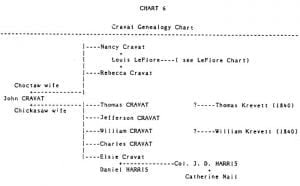Kealedji Tribe
According to native tradition this was a branch of Tukabahchee, but, if so, it must have separated at a very early date. Gatschet says that the name appears to refer to a warrior’s headdress, containing the words ika, his head, and a verb meaning to kill (iłäidshäs, I kill). This seems probable. At any rate the name evidently is not old enough to be worn down much by age and suggests a comparatively recent origin for the group. This is also confirmed to a considerable extent by the absence of its name from the earliest documents. Probably it is the … Read more



